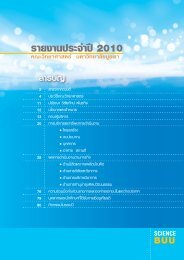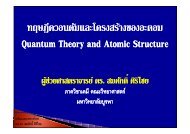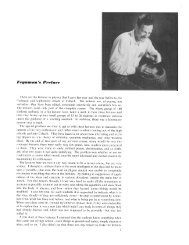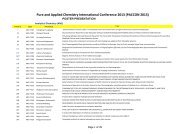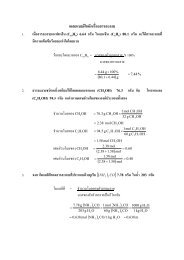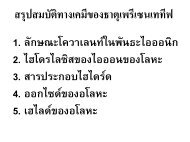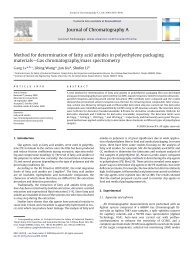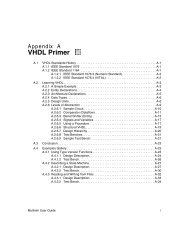USER MANUAL SWAN Cycle III version 40.72A
USER MANUAL SWAN Cycle III version 40.72A
USER MANUAL SWAN Cycle III version 40.72A
You also want an ePaper? Increase the reach of your titles
YUMPU automatically turns print PDFs into web optimized ePapers that Google loves.
18 Chapter 2<br />
one can perform a <strong>SWAN</strong> computation without and with the physical process included in<br />
the computations, in the latter case using the standard values chosen in <strong>SWAN</strong>.<br />
After it has been established that a certain physical process is important, it may be worthwhile<br />
to modify coefficients. In the case of wind input one may at first try to vary the<br />
wind velocity. Concerning the bottom friction, the best coefficients to vary are the friction<br />
coefficient. Switching off the depth-induced breaking term is usually unwise, since this may<br />
lead to unacceptably high wave heights near beaches (the computed wave heights ’explode’<br />
due to shoaling effects).<br />
2.8 Time and date notation<br />
<strong>SWAN</strong> can run for dates (i.e. nonstationary mode)<br />
• between the years 0 and 9999, if ISO-notation is used in the input (recommended)<br />
or<br />
• between the years 1931 and 2030 if two-digit code for years is used (formats 2-6 in<br />
every command that contains moments in time).<br />
Be careful when nesting <strong>SWAN</strong> in WAM, since WAM does not use ISO-notation.





